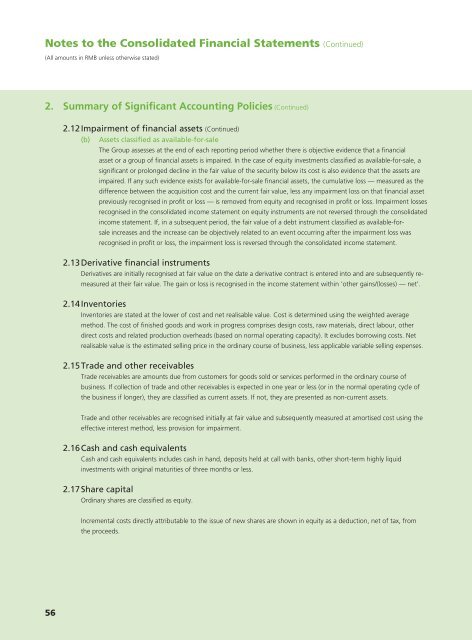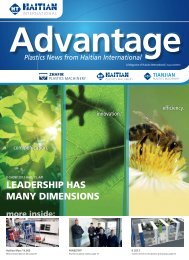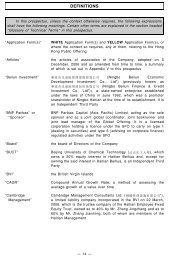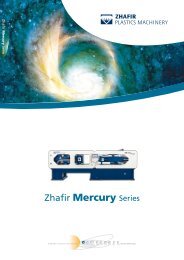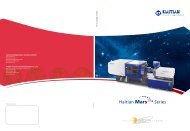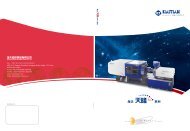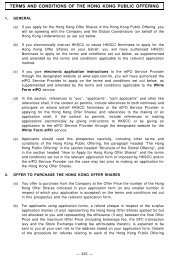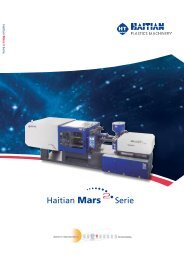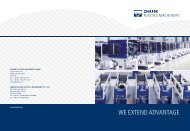Annual Report 2012 - Haitian International Holdings Ltd.
Annual Report 2012 - Haitian International Holdings Ltd.
Annual Report 2012 - Haitian International Holdings Ltd.
You also want an ePaper? Increase the reach of your titles
YUMPU automatically turns print PDFs into web optimized ePapers that Google loves.
Notes to the Consolidated Financial Statements (Continued)<br />
(All amounts in RMB unless otherwise stated)<br />
2. Summary of Significant Accounting Policies (Continued)<br />
2.12 Impairment of financial assets (Continued)<br />
(b) Assets classified as available-for-sale<br />
The Group assesses at the end of each reporting period whether there is objective evidence that a financial<br />
asset or a group of financial assets is impaired. In the case of equity investments classified as available-for-sale, a<br />
significant or prolonged decline in the fair value of the security below its cost is also evidence that the assets are<br />
impaired. If any such evidence exists for available-for-sale financial assets, the cumulative loss — measured as the<br />
difference between the acquisition cost and the current fair value, less any impairment loss on that financial asset<br />
previously recognised in profit or loss — is removed from equity and recognised in profit or loss. Impairment losses<br />
recognised in the consolidated income statement on equity instruments are not reversed through the consolidated<br />
income statement. If, in a subsequent period, the fair value of a debt instrument classified as available-forsale<br />
increases and the increase can be objectively related to an event occurring after the impairment loss was<br />
recognised in profit or loss, the impairment loss is reversed through the consolidated income statement.<br />
2.13 Derivative financial instruments<br />
Derivatives are initially recognised at fair value on the date a derivative contract is entered into and are subsequently remeasured<br />
at their fair value. The gain or loss is recognised in the income statement within ‘other gains/(losses) — net’.<br />
2.14 Inventories<br />
Inventories are stated at the lower of cost and net realisable value. Cost is determined using the weighted average<br />
method. The cost of finished goods and work in progress comprises design costs, raw materials, direct labour, other<br />
direct costs and related production overheads (based on normal operating capacity). It excludes borrowing costs. Net<br />
realisable value is the estimated selling price in the ordinary course of business, less applicable variable selling expenses.<br />
2.15 Trade and other receivables<br />
Trade receivables are amounts due from customers for goods sold or services performed in the ordinary course of<br />
business. If collection of trade and other receivables is expected in one year or less (or in the normal operating cycle of<br />
the business if longer), they are classified as current assets. If not, they are presented as non-current assets.<br />
Trade and other receivables are recognised initially at fair value and subsequently measured at amortised cost using the<br />
effective interest method, less provision for impairment.<br />
2.16 Cash and cash equivalents<br />
Cash and cash equivalents includes cash in hand, deposits held at call with banks, other short-term highly liquid<br />
investments with original maturities of three months or less.<br />
2.17 Share capital<br />
Ordinary shares are classified as equity.<br />
Incremental costs directly attributable to the issue of new shares are shown in equity as a deduction, net of tax, from<br />
the proceeds.<br />
56


